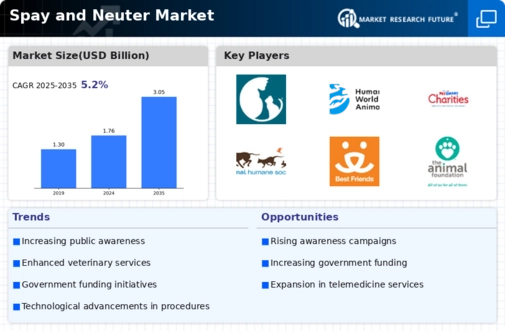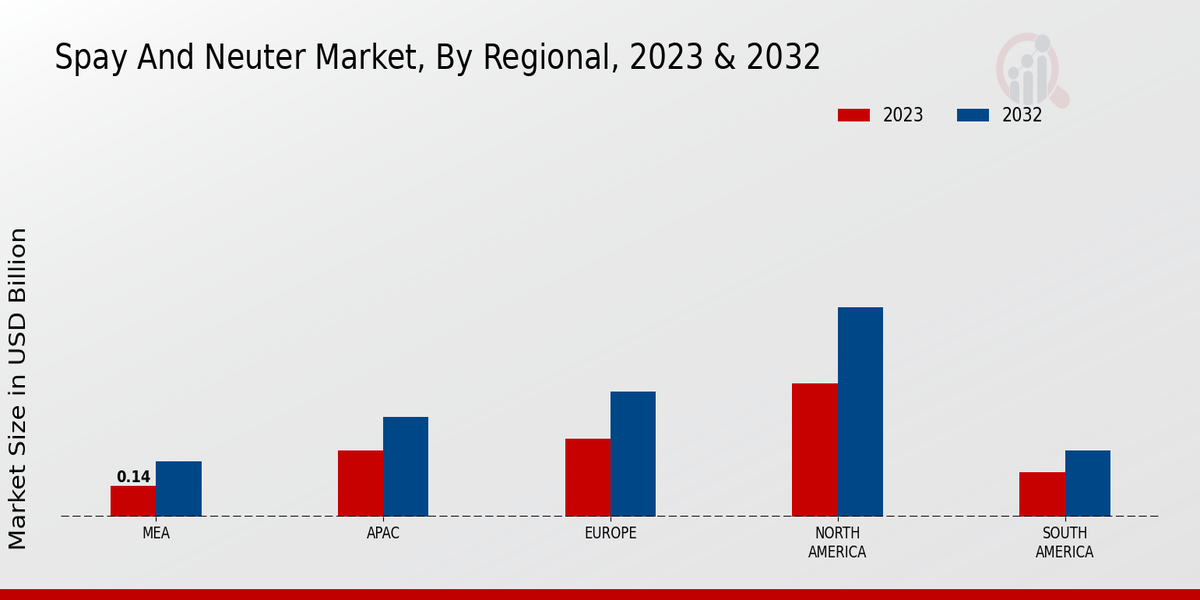Market Growth Projections
The Global Spay and Neuter Market Industry is poised for substantial growth, with projections indicating a rise from 1.76 USD Billion in 2024 to 3.05 USD Billion by 2035. This growth trajectory suggests a compound annual growth rate of 5.13% from 2025 to 2035. Such figures highlight the increasing recognition of the importance of spaying and neutering in managing pet populations and promoting animal welfare. As more stakeholders, including governments, veterinary professionals, and pet owners, engage in this movement, the market is likely to witness sustained expansion and innovation.
Community Outreach Programs
Community outreach programs serve as a crucial driver for the Global Spay and Neuter Market Industry. These initiatives, often organized by non-profit organizations and local governments, aim to educate pet owners about the benefits of spaying and neutering. By providing free or low-cost services, these programs address barriers that prevent pet owners from accessing necessary veterinary care. The effectiveness of such outreach efforts is evident in the increasing participation rates in spay and neuter clinics, which ultimately contribute to population control and improved animal welfare. As these programs expand, they are expected to play a vital role in the market's growth.
Rising Pet Ownership Trends
The Global Spay and Neuter Market Industry is significantly influenced by the rising trends in pet ownership. As more households adopt pets, the need for responsible pet management practices, including spaying and neutering, becomes increasingly critical. This trend is particularly evident in urban areas where pet ownership rates have surged. The increase in pet populations correlates with a heightened demand for veterinary services, including spay and neuter procedures. Consequently, the market is projected to grow at a compound annual growth rate of 5.13% from 2025 to 2035, reflecting the ongoing commitment to managing pet populations responsibly.
Government Initiatives and Funding
Government initiatives play a pivotal role in shaping the Global Spay and Neuter Market Industry. Various countries implement programs that provide financial assistance for spaying and neutering pets, thereby reducing the economic burden on pet owners. For instance, local governments may offer subsidized services or grants to non-profit organizations that promote these procedures. Such initiatives not only enhance accessibility but also encourage responsible pet ownership. The market is expected to grow significantly, reaching 3.05 USD Billion by 2035, as these government-funded programs continue to expand and evolve.
Advancements in Veterinary Technology
Technological advancements in veterinary medicine significantly impact the Global Spay and Neuter Market Industry. Innovations in surgical techniques and anesthesia have made spaying and neutering safer and more efficient, thereby encouraging more pet owners to consider these procedures. Enhanced veterinary training and the development of minimally invasive techniques contribute to higher success rates and reduced recovery times. As these advancements become more widespread, they are likely to increase the overall acceptance of spaying and neutering, further driving market growth. This trend aligns with the projected market value of 1.76 USD Billion in 2024.
Increasing Awareness of Animal Welfare
The Global Spay and Neuter Market Industry experiences a notable driver in the form of heightened awareness regarding animal welfare. As communities become more informed about the benefits of spaying and neutering, there is a corresponding increase in demand for these services. Educational campaigns led by animal rights organizations and local governments emphasize the importance of controlling pet populations and reducing euthanasia rates. This growing consciousness is reflected in the projected market value of 1.76 USD Billion in 2024, indicating a robust commitment to animal welfare initiatives across the globe.











